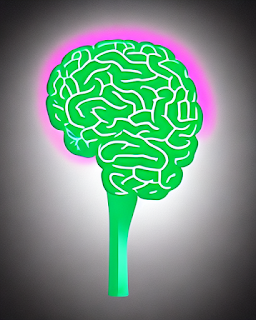The Surprising Influences of Neuroplasticity on Your Life
What is Neuroplasticity?
According to wikipedia.org, neuroplasticity is "the ability of neural networks in the brain to change through growth and reorganization. It is when the brain is rewired to function in some way that differs from how it previously functioned".
And according to https://pubmed.ncbi.nlm.nih.gov, neuroplasticity, "also known as neural plasticity or brain plasticity, is a process that involves adaptive structural and functional changes to the brain".
Neuroplastic Change
How Does Neuroplasticity Benefit You?
1. Neuroplasticity and Depression
Research suggests that depression is associated with changes in the brain, such as alterations in the activities of certain neurotransmitters and changes in the structures and functions of certain brain regions. Through neuroplasticity, certain forms of therapy and physical activity/exercise may help to reverse these changes, thereby leading to improvements in mood and overall wellbeing.
Certain forms of therapy, such as cognitive-behavioural therapy (CBT) and mindfulness-based therapies (MBT), can help to change the way the brain processes information and emotions and alter its plasticity, which can help to improve symptoms of depression.
MBT, such as mindfulness-based stress reduction (MBSR) and mindfulness-based cognitive therapy (MBCT), aims to change the way a person's brain processes emotions and thoughts by teaching them to be more aware of their thoughts and feelings in the present moment and to respond to them in a balanced and healthy way.
Physical
activity and exercise can promote neuroplastic changes in the brain,
such as via the growth of new nerve cells or neurons, increased blood flow to the
brain and increased production of certain neurotransmitters such as dopamine. These changes may help to alleviate symptoms of depression by improving the mood and overall wellbeing of the sufferer.
The changes in the brain that happen as a result of neuroplasticity may not only help alleviate symptoms of depression but may also help the person suffering from depression to be more resilient to future episodes of depression.
It's
important to note that depression is a complex condition that can have
many
different causes, and neuroplasticity is just one tool that could help.
Though I personally don't believe in using antidepressants or seeking
therapies to heal depression, I've to emphasise that it's
best to seek help from mental health professionals, especially if it's affecting your life in any significant ways.
2. Neuroplasticity and Trauma
According to https://www.symmetrycounseling.com, scientists once believed that healing trauma is difficult if not impossible, because trauma rewires a person's brain. Neuroplasticity, however, shows us that this isn't true. Human brains that have been rewired due to trauma can be rewired again as a result of healing or therapeutic experiences.
Therapies such as CBT and exposure therapy can be helpful in promoting neuroplastic changes in the brain. CBT can help a person to change negative patterns of thinking and behaviour that are associated with their traumatic experiences. Exposure therapy, on the other hand, can help them to gradually confront and become desensitised to the memories and triggers associated with their traumatic experiences.
As therapy progresses, they also learn to activate other brain regions which help to modulate their emotional responses to the traumatic memories and triggers, thereby reducing the emotional intensity of the memories and triggers, as well as reducing the frequency of flashbacks and improving their ability to cope with the trauma.
It's important to note that overcoming trauma is a gradual process that takes time and effort. And it requires consistency and a holistic approach that addresses not only the symptoms but also the underlying causes of trauma. Therefore, it's advisable to seek help from mental health professionals.
3. Neuroplasticity and Post-Traumatic Stress Disorder (PTSD)
You can't rely solely on neuroplasticity to do its job of helping you overcome PTSD. You've to be an active participant in your own recovery. Otherwise, neuroplasticity might not benefit you, even if you know it can help you.
If you're suffering from PTSD, there's a disruption to the neuroplasticity of your brain. There's literally a loss of synapses. As a result, you tend to get stuck in a rut of negative thinking/feeling or fear-based memories. But you don't have to live your life stuck in such a rut because there are certain therapies that can actually help you.
CBT helps by challenging and changing negative thought patterns and beliefs associated with the trauma that has led to PTSD. Exposure therapy is based on the idea that by gradually exposing a person to their traumatic memories or triggers in a controlled setting, they can learn to cope with their trauma and reduce the symptoms of PTSD.
4.Neuroplasticity and Learning
According to the author of Your Brain Knows More Than You Think, studies
have shown that the brain retains its plasticity even in old age, which
means there's practically no age limit when it comes to learning. (Pg
75)
Neuroplasticity helps learning in several ways:
(2) It helps to strengthen existing connections, which improves the efficiency of neural communication and helps the brain retrieve stored information more easily.
(3) It enables the brain to reorganise itself in response to new experiences, which can lead to the development of new skills and abilities.
(4) It enables the brain to form new neurons, which can help improve the brain's capacity to learn.
5. Neuroplasticity and Stroke
Stroke damages some of the connections inside the brain, and between the brain and the body. Neuroplasticity can help compensate for the damage by forming new neural connections. It can help a person recover some lost functions by rerouting signals through undamaged areas of their brain.
An important point to note is that in order for the neuroplastic changes to be significant and lasting, rehabilitation training
needs to be relevant and specific to the functions that are being
improved. For instance, let's say you want to improve your movement and balance. In such a case, locomotion and balance training would be relevant, as it develops cognition and the sensorimotor cortex, which is the part of the brain that's responsible for body movements.
How Does Neuroplasticity Harm You?
As much as neuroplasticity can benefit you, it can also harm you as well because it's like a double-edged sword.
It can be a blessing when the ongoing sensory input you receive is pleasurable because it allows you to develop a brain that is better able to perceive and savour pleasant sensations. However, it can be a curse when the sensory system that is receiving ongoing input is the pain system. (The Brain's Way of Healing, Pg. 64)
I'm going to be just briefly touching on two areas where neuroplasticity could do you harm, namely, pain and addiction.
1. Neuroplasticity and Pain
When a person experiences physical pain, their brain may actually rewire itself in a way that amplifies the pain signals, leading to increased sensitivity to pain. This can make it difficult for them to manage the pain and it can have a negative impact on their quality of life as a result.
2. Neuroplasticity and Addiction
If a person engages in addiction, such as substance abuse, their brain may actually rewire itself in a way that reinforces it. As a result, it can be hard for them to break the cycle of addiction, thereby leading to negative consequences for their health and wellbeing.
What Can You Do to Enhance the Plasticity of Your Brain?
Neuroplasticity happens naturally in our brains, but there are external factors that can influence it. According to https://musclesinharmony.com, research has shown that music, art, dance and exercise can help to enhance it. Getting plenty of rest and mindfulness can also help.
1. Music and Neuroplasticity: Enhance the Plasticity of Your Brain Through Music
Music can enhance neuroplasticty because it
practically activates the entire brain. And the reason why that matters
is because brain pathways and even whole neural networks are
strengthened as a result.
Listening to music can activate multiple areas of the brain, including those involved in memory and emotion, thereby enhancing the plasticity of the brain.
On the other hand, learning to play a musical instrument
requires the brain to coordinate a variety of skills, including motor
control, memory and attention. And as a result, it leads to changes in
the structure and function of the brain, thereby enhancing its
plasticity.
2. Art and Neuroplasticity: Enhance the Plasticity of Your Brain Through Art
The act of creating art engages neuroplasticity as it requires the use of multiple areas of the brain, including those involved in perception, motor control and emotion. This can lead to an increase in the number and strength of connections between brain cells, thereby enhancing the plasticity of the brain.
Viewing and engaging with art may also enhance neuroplasticity as they can activate multiple areas of the brain and promote the formation of new neural connections.
3. Dance and Neuroplasticity: Enhance the Plasticity of Your Brain Through Dance
Dance has been shown to have a positive impact on neuroplasticity. It involves a combination of physical and cognitive demands, such as coordinating movement with music and remembering choreography, which can help to engage multiple areas of the brain and promote neural connections, thereby enhancing the plasticity of the brain.
Dance requires physical movement. Dance also requires the brain to control the physical movement as well as make decisions as to how that movement is executed. In addition, dance requires memory and information recall. As you can see, dance activates different parts of the brain, which therefore helps to enhance its plasticity.
4. Exercise and Brain Health: Enhance the Plasticity of Your Brain Through Exercise
Research has shown that exercise can help to prevent neuron loss in key areas of the hippocampus, which is the part of the brain that has to do with memory and other functions.
5. Rest and Neuroplasticity: Enhance the Plasticity of Your Brain Through Rest
You can also enhance the plasticity of your brain by getting plenty of rest. Research
has shown that sleep plays an important role in dendritic growth in the
brain. Dendrites help to transmit information from one neuron to
another. By strengthening these connections through rest, it can help
to enhance the plasticity of your brain.
6. Mindfulness and Neuroplasticity: Enhance the Plasticity of Your Brain Through the Practice of Mindfulness
Mindfulness can lead to increased connectivity between different areas of the brain, which can improve communication and processing in the brain.
In addition, mindfulness has been found to increase the growth of new neurons in the hippocampus, which is the region of the brain that's involved in learning and memory.
Conclusion
(P/s: My next blog post will be published on 26 Mar 2023.)
NOTES
1. Check out my website:
https://www.elevatewellnesscircle.com/
2. Check out my affiliate programme:
https://www.elevatewellnesscircle.com/affiliate
3. Try for FREE: power recharge therapy, power foot detox therapy & acugraph energy analysis! (https://energia.sg/free?ref=anniechan)













.png)
.png)




